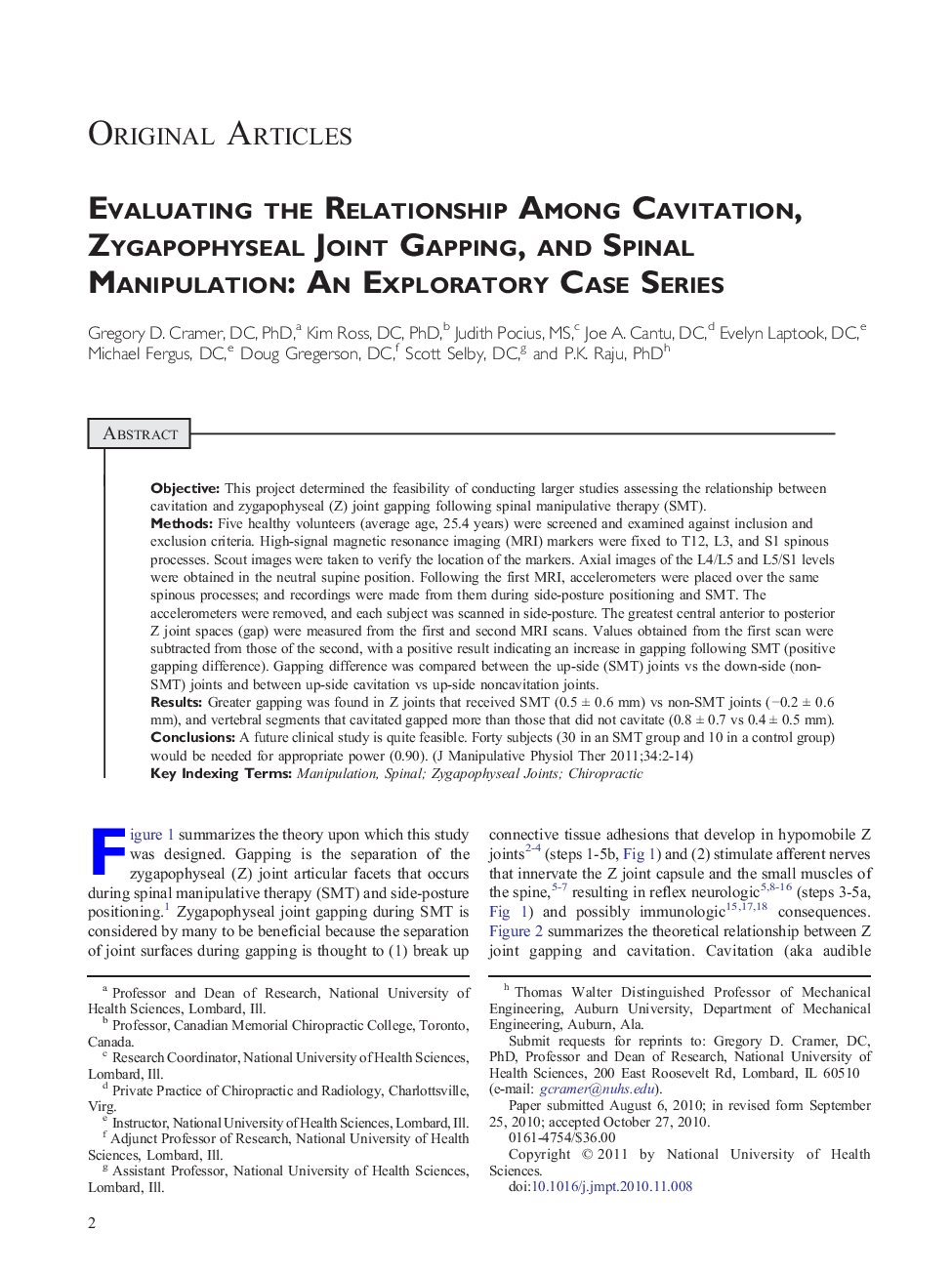| کد مقاله | کد نشریه | سال انتشار | مقاله انگلیسی | نسخه تمام متن |
|---|---|---|---|---|
| 2621165 | 1135672 | 2011 | 13 صفحه PDF | دانلود رایگان |

ObjectiveThis project determined the feasibility of conducting larger studies assessing the relationship between cavitation and zygapophyseal (Z) joint gapping following spinal manipulative therapy (SMT).MethodsFive healthy volunteers (average age, 25.4 years) were screened and examined against inclusion and exclusion criteria. High-signal magnetic resonance imaging (MRI) markers were fixed to T12, L3, and S1 spinous processes. Scout images were taken to verify the location of the markers. Axial images of the L4/L5 and L5/S1 levels were obtained in the neutral supine position. Following the first MRI, accelerometers were placed over the same spinous processes; and recordings were made from them during side-posture positioning and SMT. The accelerometers were removed, and each subject was scanned in side-posture. The greatest central anterior to posterior Z joint spaces (gap) were measured from the first and second MRI scans. Values obtained from the first scan were subtracted from those of the second, with a positive result indicating an increase in gapping following SMT (positive gapping difference). Gapping difference was compared between the up-side (SMT) joints vs the down-side (non-SMT) joints and between up-side cavitation vs up-side noncavitation joints.ResultsGreater gapping was found in Z joints that received SMT (0.5 ± 0.6 mm) vs non-SMT joints (−0.2 ± 0.6 mm), and vertebral segments that cavitated gapped more than those that did not cavitate (0.8 ± 0.7 vs 0.4 ± 0.5 mm).ConclusionsA future clinical study is quite feasible. Forty subjects (30 in an SMT group and 10 in a control group) would be needed for appropriate power (0.90).
Journal: Journal of Manipulative and Physiological Therapeutics - Volume 34, Issue 1, January 2011, Pages 2–14